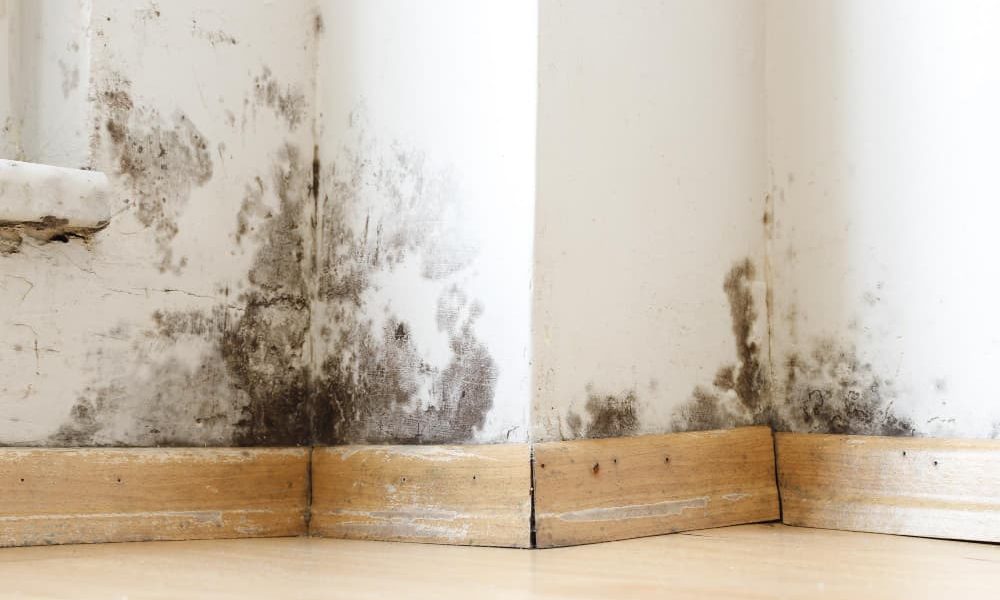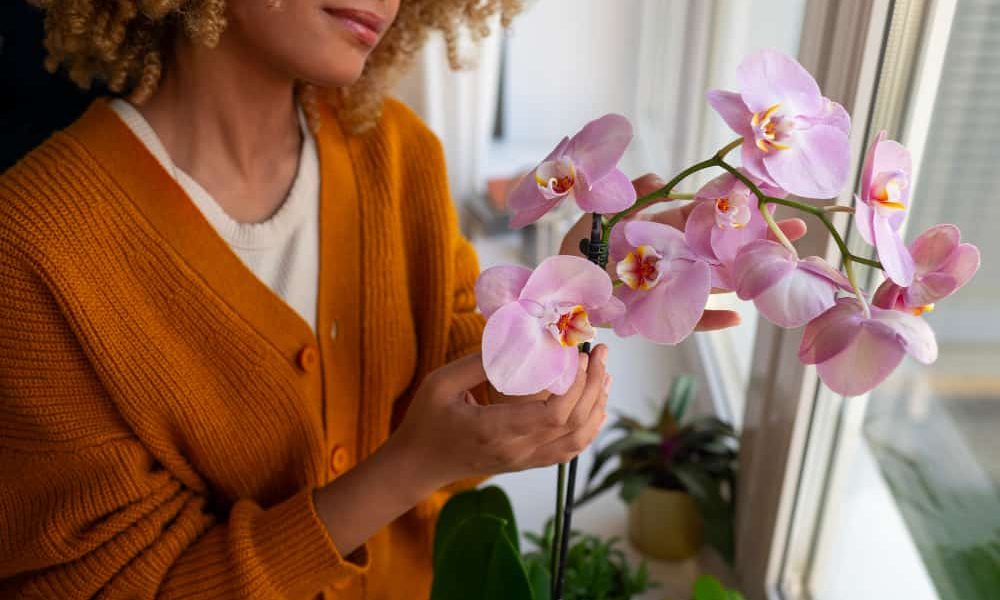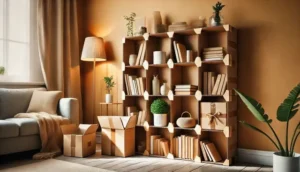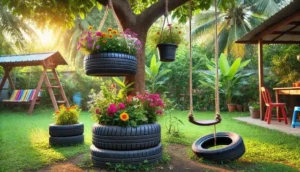In a world that’s increasingly shifting toward sustainability and conscious consumption, finding creative ways to upcycle materials has never been more important. From old clothes to discarded furniture, the possibilities for transforming everyday items into something beautiful are endless. One particularly imaginative and eco-friendly trend is turning recycled magazine pages into stunning wall art. This innovative approach not only breathes new life into paper that would otherwise end up in a landfill, but also allows you to create unique, personalized art pieces that can enhance any space in your home.
The idea of using recycled materials for home décor is a powerful statement about the way we view waste and consumption. It encourages us to see potential in what we might typically discard. Recycled magazine wall art is the perfect combination of environmental consciousness and artistic expression. Whether you’re looking to add a pop of color to your living room, create a striking focal point for your office, or simply engage in a fun, budget-friendly DIY project, crafting with recycled magazines opens the door to endless creative possibilities.
In this guide, you’ll learn how to transform old magazines into beautiful works of art that reflect your personal style and help reduce waste. From selecting the right materials to designing and assembling your masterpiece, this step-by-step process will show you how to create wall art that’s not only visually stunning, but also eco-friendly. Ready to get started? Let’s dive in and explore how you can turn discarded pages into something truly special!
Why Use Recycled Magazine Pages for Wall Art?
In a world increasingly focused on sustainability and reducing waste, the idea of upcycling everyday materials into art is more appealing than ever. One creative approach gaining traction is the use of recycled magazine pages to create wall art. Not only does this process transform old, forgotten magazines into eye-catching, personalized décor, but it also promotes eco-friendly practices. By turning discarded paper into unique works of art, you contribute to a more sustainable lifestyle while enhancing your home’s aesthetic. But why choose recycled magazine pages for wall art specifically?
Eco-friendly Benefits of Recycled Magazine Wall Art
One of the most compelling reasons to use recycled magazines for your next wall art project is the environmental impact. Every year, millions of tons of paper end up in landfills, contributing to deforestation and increasing waste. Recycling magazine pages not only keeps paper out of landfills, but also reduces the demand for new paper production, which saves trees, water, and energy. The Environmental Protection Agency (EPA) estimates that recycling one ton of paper saves 17 trees, 7,000 gallons of water, and 463 gallons of oil.
When you create art from recycled materials, you’re doing more than just crafting—you’re making a conscious decision to help the environment. Each piece of wall art made from recycled magazines represents a small, yet significant, effort to combat the throwaway culture. Choosing to upcycle these materials is an act of sustainability, as it gives new life to items that would otherwise be discarded.
Additionally, recycled magazine art is a form of creative expression that aligns with the growing trend of eco-friendly home decor. As consumers become more environmentally conscious, they seek home decorations that reflect their values. By incorporating sustainable art into your living space, you’re not just adding style, but also showcasing your commitment to a greener lifestyle. This shift towards eco-friendly designs is part of a larger cultural movement that encourages people to make mindful choices about the products they bring into their homes.
Affordable and Accessible Art
Another key benefit of using recycled magazines for wall art is the affordability. High-quality art pieces can often be expensive, but creating your own art from materials you already have (or can easily find) significantly cuts down on costs. Magazines are often available for free or at a very low cost from thrift stores, libraries, or even your own recycling bin. With just a few additional supplies, like scissors, glue, and a canvas, you can craft something extraordinary without breaking the bank.
What makes recycled magazine art particularly appealing is its accessibility. You don’t need to be an experienced artist or have specialized tools to create something beautiful. In fact, one of the joys of working with recycled materials is the sense of freedom it provides—there’s no pressure to make everything perfect. Every cut, tear, and twist adds character to the final piece. This means that anyone, regardless of their artistic background, can take part in the process and produce something they’re proud of.
Beyond cost, working with recycled materials offers a unique opportunity for personalization. Since no two magazine pages are alike, each art piece becomes a one-of-a-kind creation. You can tailor your design to match your personal taste or the specific décor of your home. Want a vibrant splash of color in your living room? Select magazine pages filled with bright hues. Prefer a more minimalist or monochrome look? Use pages dominated by neutral tones and soft textures. The possibilities are truly endless.
Materials and Tools Needed for Creating Wall Art Using Recycled Magazines
Now that you understand the environmental and creative benefits of using recycled magazines for wall art, let’s dive into the practical side of things: the materials and tools you’ll need to get started. One of the best aspects of this craft is its simplicity. You likely have most of the necessary items around your house, making this an incredibly accessible and budget-friendly project.
What You Need to Make Wall Art from Recycled Magazines
- Old Magazines:
The foundation of your project, magazines offer a vast range of colors, textures, and images that you can incorporate into your artwork. The beauty of using magazines is the diversity they provide—each page holds a different combination of shades and patterns. This variety allows you to experiment with different themes and designs, whether you’re aiming for abstract shapes, landscapes, or even portraits. Collect a good assortment of magazines to give yourself plenty of options. You can either use what you already have or ask friends, family, and local thrift stores for donations. - Scissors or Craft Knife:
Precision cutting tools like sharp scissors or a craft knife will allow you to trim the magazine pages into the desired shapes and sizes. You’ll need to carefully cut around images or select areas of color that fit your design. If you plan to cut out more intricate patterns, a craft knife might be the better choice for accuracy. - Glue:
A strong adhesive is essential for securing your magazine pieces to the canvas or surface you’re working with. Regular white glue or glue sticks can work, but for a more durable bond, consider using mod podge or other decoupage glue. This will also help seal the surface and give your art a glossy finish. Be sure to apply the glue evenly to prevent wrinkles or bubbles. - Canvas or Base Surface:
Decide on the base for your wall art. This could be a canvas, cardboard, or even a piece of wood, depending on the look you’re going for. Canvases are often preferred for their durability and ease of hanging, but using reclaimed or recycled wood can add an extra layer of eco-friendliness to your project. The size of your base will also dictate the scale of your final artwork, so choose accordingly based on the space where you intend to display it. - A Ruler or Straightedge:
If your design involves straight lines or geometric shapes, having a ruler on hand will help ensure accuracy. It’s especially helpful when creating grid-like or structured layouts. - Optional: Paint or Markers:
Although magazine pages provide plenty of color and texture, you can also enhance your piece by incorporating other artistic elements like paint or markers. This allows for even more customization and adds depth to your work. For instance, you might use a black marker to outline shapes or add fine details to a magazine collage.
With these basic materials and tools, you’re ready to start creating stunning, eco-friendly wall art. The best part? You don’t need any prior experience or fancy equipment—just a little creativity and some patience.
Step-by-Step Guide to Creating Wall Art Using Recycled Magazines
Now that you’ve gathered your materials and tools, it’s time to start the creative process. The beauty of working with recycled magazines is the flexibility it offers—there’s no right or wrong way to make your art, just your unique vision. Below is a step-by-step guide to help you get started, offering tips and techniques to ensure your wall art looks both professional and personal.
Step 1: Choosing the Right Magazines
The first step in creating your masterpiece is selecting the right magazines. This might seem trivial, but the choice of magazines will greatly influence the final look of your wall art. You’ll want to focus on magazines that offer a diverse range of colors, textures, and images. Art, fashion, travel, and home décor magazines often have a rich variety of high-quality photography and vibrant colors, which are ideal for artistic projects.
Consider the overall theme of your wall art. Are you aiming for a specific color scheme, like warm earth tones or bright, bold hues? Or perhaps you want a nature-inspired look with lots of green and blue tones. Flip through your magazines and tear out pages that catch your eye—anything from a full-page ad to a detailed image of a flower can serve as the base for your artwork. Be selective but open to inspiration; sometimes a surprising image or texture can become the focal point of your piece.
Pro Tip: It’s helpful to categorize your magazine pages by color or pattern before you start cutting. This will make the design process smoother and give you a visual guide to work with.
Step 2: Cutting and Shaping the Magazine Pages
Once you’ve gathered a good collection of pages, the next step is cutting and shaping them. The way you cut your pages will depend on the style of your artwork. For example, if you’re creating an abstract piece, you might cut geometric shapes—triangles, squares, or circles. If your goal is a more organic look, you can tear the edges of the pages for a softer, less structured design.
For detailed images, use sharp scissors or a craft knife to carefully cut around the shapes or objects you want to highlight. Some people prefer to roll magazine strips into tubes or coils, creating a 3D effect on their canvas. This technique adds texture and depth, giving your artwork a tactile quality. The trick is to be mindful of how each piece fits into your larger design. It’s a good idea to lay the pieces out on your base surface before gluing to see how they fit together.
Pro Tip: Don’t worry about perfection when cutting or tearing the magazine pages. The slight imperfections often add character to the piece, making it feel more authentic and handmade.
Step 3: Designing the Layout
The design process is arguably the most fun part of creating wall art from recycled magazines. This is where you get to play around with different arrangements, colors, and textures to form a cohesive image or abstract design.
Option 1: Abstract Designs
Abstract designs allow for more freedom and creativity. You can focus on color blocking, layering, or creating patterns that flow together. If you’re drawn to modern or minimalist designs, consider using monochromatic colors and geometric shapes. For those who love bold statements, mix and match different colors, textures, and images to create a collage-style piece. Layering is key here—by stacking different pieces of magazine paper, you can create depth and movement in your artwork.
Option 2: Image-Based Designs
If you’re more interested in creating recognizable images or scenes, such as a cityscape, a flower, or a landscape, your layout will be more detailed and intricate. Use the magazine pages to mimic the shapes and textures of your chosen subject. For example, strips of green magazine pages can be used to represent grass or foliage, while blues and whites can create a serene sky. This technique is similar to mosaic art, where small pieces come together to form a larger image.
Option 3: Geometric or Structured Designs
If you’re someone who appreciates structure, consider a more geometric approach. You can use rulers and straight edges to cut clean lines and arrange your magazine pieces into a grid or patterned layout. This type of design is excellent for modern or contemporary spaces, offering a clean, organized look while still allowing for creativity with colors and textures.
Pro Tip: Lay out your pieces on the base surface before you start gluing. This will give you a chance to tweak the arrangement until you’re happy with it.
Step 4: Assembling the Artwork
Once you’re satisfied with the layout, it’s time to start gluing the pieces down. Begin by working from the background to the foreground. If your design has layers, glue the bottom-most pieces first and gradually work your way up. Use a brush or a sponge to apply the glue evenly, ensuring there are no bubbles or wrinkles. Mod Podge or any decoupage glue works well for this type of project, as it dries clear and gives the art a polished, professional finish.
Be mindful of the amount of glue you use. Too much can cause the magazine paper to warp, while too little won’t hold the pieces in place securely. A thin, even layer is usually sufficient. After you’ve glued down all the pieces, let the artwork dry for several hours or overnight to ensure the glue sets properly.
For added protection and shine, you can apply a final layer of Mod Podge or a clear sealant over the entire piece. This will not only protect the magazine pages from wear and tear but also give your wall art a glossy, finished appearance.
Pro Tip: To add extra dimension to your artwork, consider raising some elements by gluing small foam pads behind them. This creates a 3D effect and adds depth to your piece.
Creative Design Ideas for Magazine Wall Art
With the basics of creating wall art from recycled magazines covered, let’s explore some creative design ideas to inspire your project. The possibilities are endless, so feel free to adapt these suggestions based on your personal taste and available materials.
Geometric Patterns
Geometric shapes are a popular choice for those who enjoy clean, structured designs. You can cut magazine pages into triangles, squares, or hexagons and arrange them in repeating patterns for a modern, minimalist look. To keep the design visually interesting, use contrasting colors and textures.
Nature-Inspired Scenes
Bring the outdoors inside by creating landscapes, flowers, or trees using magazine cutouts. Green and blue pages can be layered to mimic grassy fields and skies, while brown and red pages can represent mountains or autumn foliage.
Typography and Word Art
For a personalized touch, use magazine pages to create words or quotes that resonate with you. Whether it’s an inspirational phrase or a family name, typography art made from recycled materials adds a meaningful element to your home decor.
These ideas are just the beginning—feel free to experiment and push the boundaries of what’s possible with recycled magazine art!
Displaying and Preserving Your Recycled Magazine Wall Art
Once you’ve completed your unique piece of recycled magazine wall art, the next step is finding the perfect way to display and preserve it. After all, your art deserves to be showcased in a way that not only enhances its visual impact but also ensures it lasts for years to come.
Best Ways to Showcase Your Artwork
Choosing the Right Location
Where you decide to display your recycled magazine wall art can greatly impact how it is perceived. Consider the room’s lighting, color scheme, and overall décor. A well-lit room, especially one with natural light, will highlight the vibrant colors and textures in your magazine art. If the artwork is abstract or filled with bold, bright hues, hanging it in a neutral-colored room can create a striking contrast, making the artwork the focal point of the space.
For more subtle or minimalist designs, consider spaces that could use a bit of visual interest, such as a hallway, an office, or a reading nook. By choosing a space that complements the theme and style of your art, you can create a harmonious balance between the décor and the artwork.
Framing the Art
Framing is an essential step in making your recycled magazine wall art look polished and professional. It not only enhances the aesthetic appeal but also provides protection. When selecting a frame, consider the overall vibe of the piece. For modern or minimalist art, a simple, sleek frame in black, white, or metal will work well. For more rustic or nature-inspired pieces, wooden frames can add warmth and complement the organic feel of the artwork.
If you prefer a raw, unframed look, you can opt to display your art on a stretched canvas or reclaimed wood. This can give the piece a more natural, handmade quality, which is perfect for those who appreciate the “DIY” aesthetic. Either way, framing or mounting your art will provide stability and ensure it stands the test of time.
Arranging Multiple Pieces
If you’ve created multiple pieces of magazine art, consider arranging them together as a gallery wall. Gallery walls are a popular trend in interior design, allowing you to showcase a series of related artworks in a cohesive and eye-catching display. You can play with different frame sizes and orientations, or stick to a uniform grid pattern for a more structured look.
Another idea is to mix your recycled magazine wall art with other types of art or photographs. This eclectic mix of styles and mediums can create a dynamic and personal display that reflects your individuality.
Protecting and Preserving Your Recycled Magazine Wall Art
Given that magazine paper is more fragile than other mediums, such as canvas or oil paint, it’s important to take steps to preserve your artwork. Proper care will help prevent yellowing, fading, or warping over time, ensuring your art remains vibrant and intact.
Sealing the Surface
To protect the magazine paper and glue from moisture and dust, apply a clear sealant over the finished artwork. Mod Podge is a popular choice, as it dries clear and provides a durable, glossy finish. You can also use a spray-on acrylic sealer for a smooth, even coat. Make sure to cover the entire surface, especially the edges of the magazine cutouts, to prevent peeling.
If you prefer a matte finish, many sealants are available in matte versions, which offer protection without the shine. Whichever option you choose, sealing the surface is essential for preserving the integrity of your magazine art.
Avoid Direct Sunlight
Exposure to direct sunlight can cause the colors in magazine pages to fade over time, especially since paper is more prone to UV damage than other materials. To avoid this, hang your artwork in a spot that doesn’t receive prolonged sunlight, or consider applying a UV-protective spray to your piece. Many clear acrylic sealants offer UV protection, which can help extend the life of your artwork.
Keep Away from Moisture and Humidity
Magazine paper is highly susceptible to damage from moisture and humidity. If you live in a humid environment, avoid hanging your art in areas like bathrooms or kitchens where humidity levels fluctuate. Additionally, consider using a dehumidifier to maintain a stable environment, or hang your artwork in an area that remains dry year-round.
For extra protection, place your artwork in a frame with a glass cover. This not only shields it from moisture but also from dust and accidental damage.
Conclusion
Creating wall art from recycled magazine pages is not only a fun and rewarding DIY project, but it also embodies the principles of sustainability and creativity. By repurposing old magazines into vibrant, one-of-a-kind pieces of art, you reduce waste, save money, and add a personal touch to your home decor. From the eco-friendly benefits to the limitless design possibilities, recycled magazine art is an ideal way to express your individuality while caring for the planet.
Whether you’re crafting abstract pieces, nature-inspired scenes, or geometric patterns, the techniques outlined in this guide will help you create stunning wall art that can transform any room. And with proper care, your artwork will remain beautiful and preserved for years to come.
So why not start today? Gather your old magazines, grab your scissors, and let your imagination take flight. The possibilities are endless, and with each project, you’ll be making your own small contribution to a more sustainable world.







